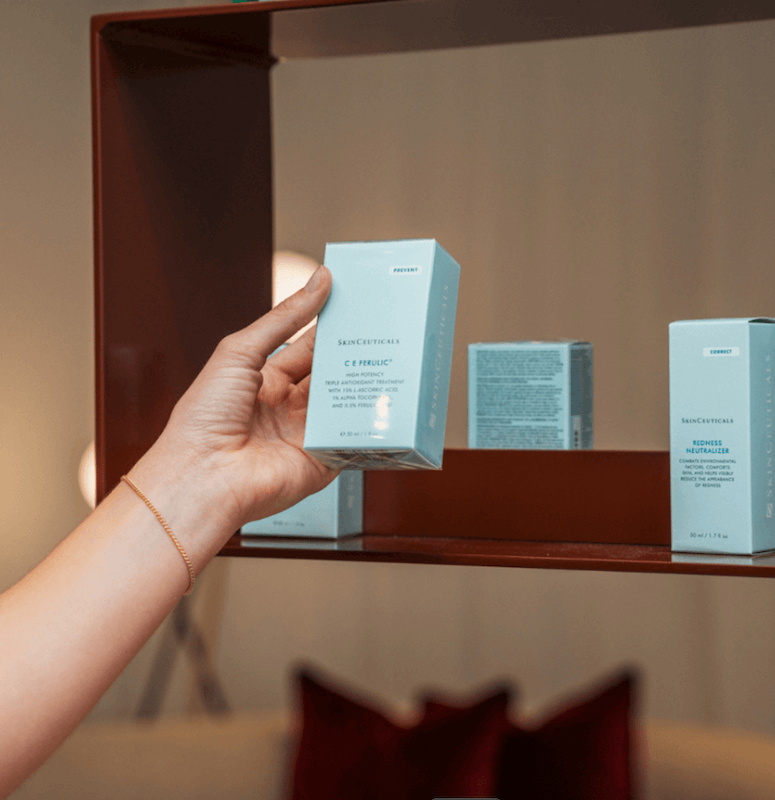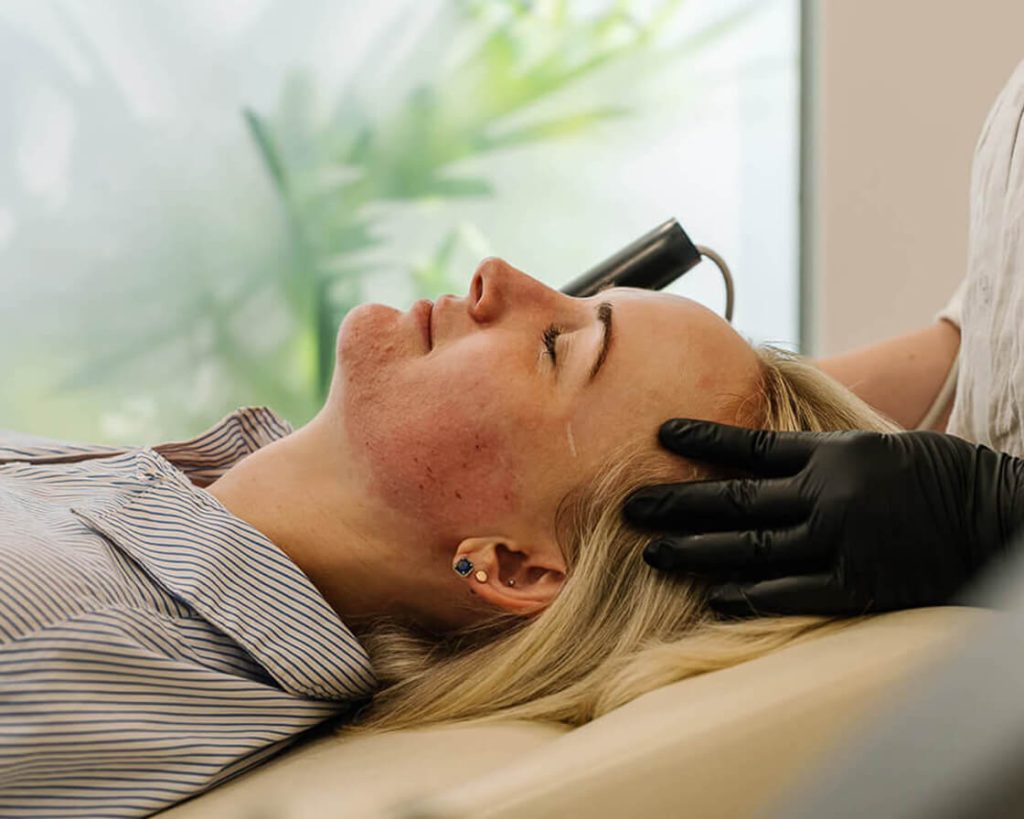Glowing skin means different things to different people.
For some, it’s brightness and clarity. For others, it’s an even tone or smooth texture. What it always signals is healthy skin that’s well supported inside and out.
This blog walks you through the steps that matter most. From daily routines that make the biggest difference to in-clinic treatments.
You don’t need to do everything at once. But if your skin isn’t looking its best, there’s a clear way to bring back balance and glow.
How to get glowing skin
#1 — Stick to a simple daily routine
Many people expect too much from products and too little from routine. Healthy skin comes more from consistency than from what’s inside a jar.
Keep it steady:
- Cleanse gently without over-washing or stripping the skin.
- Moisturise every day, even if your skin is oily.
- Use SPF every morning. This matters indoors and on cloudy days, too.
When habits keep changing, the skin barrier doesn’t get a chance to recover. That’s when breakouts, redness, or dullness show up.
A steady routine gives skin the stability it needs to repair and stay strong.
#2 — Hydrate from both sides
Water alone won’t make skin glow. Hydration has to come from both inside and out.
To hydrate from the inside, drink water steadily through the day and eat foods with high water content like cucumber, berries, and citrus.
Add healthy fats such as salmon, walnuts, and flaxseed to help keep skin soft and flexible.
To take care of your skin from the outside, look for ingredients that pull water in. These include hyaluronic acid and glycerin, and ones that lock it in, like ceramides and niacinamide.
Without a strong barrier, moisture escapes before it can help.
Hydration works best when it’s layered. With consistency, skin holds onto water more easily and looks plumper and more resilient.
![]()

#3 — Protect, cleanse, and rest
Glowing skin depends on a few basics that often get overlooked. Sunscreen, proper cleansing, and good sleep do more than any expensive serum.
UV light breaks down collagen and causes pigmentation, even through windows. Wearing a broad-spectrum SPF every morning is non-negotiable.
At the same time, cleansing needs balance. Too much strips natural oils, while too little leaves behind sweat, pollution, and makeup that dulls skin.
A gentle cleanser keeps skin clear without leaving it tight.
And then there’s sleep. Nighttime is when skin repairs itself. Poor sleep shows up quickly as puffiness, dullness, and fine lines, while consistent rest helps skin recover and stay strong.
#4 — Keep stress low and eat well
Skin often reflects what’s happening inside the body.
When stress hormones like cortisol rise, oil production increases and healing slows, leading to more breakouts and irritation. Hormonal shifts during puberty, pregnancy, or perimenopause can cause dryness or clogged pores.
These changes are normal, but the skin may need extra care at those times.
Food also makes a clear difference. Too much sugar drives inflammation, which worsens acne and speeds up ageing.
Diets lacking healthy fats leave skin looking dull. Balance matters most. It isn’t about strict rules but about avoiding the spikes that throw skin off track.
#5 — Add professional treatments when skin needs more support

Even the most consistent routine has its limits. Some concerns, like uneven tone, fine lines, or loss of firmness, go deeper than creams can reach.
That’s when professional treatments can help.
- Hydrafacial — A treatment that combines cleansing, gentle exfoliation, pore extraction, hydration, and antioxidant infusion. Helpful for dull or congested skin.
- Skin peels — Acid-based exfoliation that targets pigmentation, rough texture, and fine lines.
- Rejuran — A treatment made from polynucleotides (PN) that repair skin from within, improving tone, elasticity, and texture over time.
Remember, these treatments are most effective when a solid routine is already in place. They build on good habits rather than replace them.
You can achieve glowing skin with the right approach
Glowing skin doesn’t come from trends or miracle products. It comes from steady care: proper hydration, daily sun protection, and enough rest.
These habits give skin the conditions it needs to stay clear, balanced, and bright.
Professional treatments can add more when needed. A hydrafacial can give an instant refresh, while something like Rejuran supports long-term repair.
The goal is always the same: skin that looks healthy and natural, while still feeling like your own.
If you’re unsure what your skin needs, a consultation with a qualified cosmetic physician can help. They assess skin type, lifestyle, and goals, and can guide you toward treatments that fit your situation rather than a templated approach.
And remember, there’s no need to overhaul everything at once. Small, consistent changes bring the best results.


